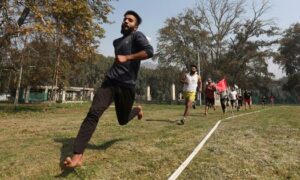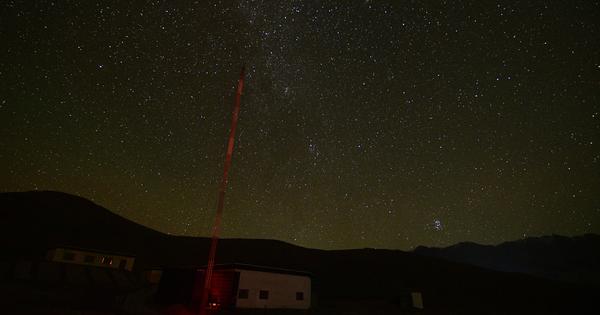
We had been warned. It will be bitterly cold. Totally dark. You’re at 14,000 feet. There’s less oxygen in the air than at home. You’ll fumble with the buttons on your camera. Your mind will get befuddled, you’ll walk slower, you’ll feel the strain of going up even gentle ramps.
With all that in mind, late one night I decided to take a break from hours of photographing the night sky. Thought I’d spend an hour or so downloading what I had got already that night. Must have been about 1.30am when I turned the camera off, made sure once more that it was securely fastened to the tripod, and trudged the 10-12 minutes to the dining hall, the last part up a gentle ramp. Find a chair, catch my breath, warm up a bit, do the download, take a 20 minute nap and head back out – such was my thinking.
Only, when I got there and removed most of my four layers of clothes and shoes and two pairs of socks, I realised I had forgotten the little device I needed to download my photos. Put everything I had removed back on and trudged back through the cold and dark to the camera. Only, when I got there and checked my gear … no device. I had not even brought it along tonight, forgotten in our homestay. So I trudged back to the Hall, shivering in the cold, up the ramp again, cursing into the darkness. Two needless trudges.
Small thing, you say? We all forget things, you aver? Well we do, and I do. But there in Hanle, conscious of not taking the cold and altitude lightly, running into other snafus big and small that I may never have run into at sea level … well, I was willing to believe my brain was functioning at somewhat less than 100%.
Not that I minded. Because … well, that night sky.
With some 40 other amateur astronomers and astrophotographers, I was at the Hanle Dark Sky Reserve in Ladakh, for the four-night Hanle Dark Sky Party. “Dark Sky” because this is a spot with nearly no city lights, meaning the night sky is nothing short of spectacular. The Hanle Dark Sky Party is an annual event, run at the Indian Astronomical Observatory by the Indian Institute of Astrophysics Bangalore.
The way I saw it – me, a newcomer to this kind of photography – was really as a chance to gaze at the stars like I’ve hardly ever seen them, and then photography as a bonus. I mean, on a good night in Bombay I’ve counted 26 stars in the entire visible sky. Which is really good, because more typically in Bombay that count rarely rises above the single digits. But it is also pathetic, because in a place like Hanle, any given square centimetre of sky will feature plenty more than 26.
So I was delighted to join the Hanle Dark Sky Party. To get ready, I stocked up on: gloves, ear muffs, tripod, woollen socks, small body-heating pads, remote shutter release for my camera, headlamp, spare batteries, binoculars, cellophane to redden the light of both headlamp and torch, an app to do the same to my cellphone, an app to tell me about the stars. I spent days understanding all the gadgetry and software, working out for myself how best to shoot the night sky with my camera. Useful, all of it, but I was also aware of how it had started driving my adrenaline up, days before boarding for Ladakh.
Three days of acclimatisation in Leh, to start. Already much lovelier skies than at home. I got some decent photographs, though I had an idea there were wonders aplenty ahead.
At Hanle, we could set up more or less anywhere in a large area in front of the Indian Astronomical Observatory’s MACE – Major Atmospheric Cherenkov Experiment – telescope. Built by the Bhabha Atomic Research Centre, MACE is an eye-catching mélange of poles and mirrors that is a world-class, high-precision instrument.
MACE twinkles. Or does it?
HDSR Star Party 2025
(8/n) pic.twitter.com/dWGVO2jaQG— Dilip D’Souza (@DeathEndsFun) October 6, 2025
Not one that anyone can go peer into and hope to see Saturn’s rings, of course. But for us amateur photographers out in the field, it was often an irresistible object to place in the foreground of our images, to give some perspective to a sky full of stars.
But that first night in Hanle was discouragingly cloudy. To the southwest, as twilight turned dusk turned night, the Milky Way appeared, tall and majestic, framed by the constellations Sagittarius and Scorpius, but also cut off by banks of clouds. Discouraging, yet it struck me that the clouds made this a dramatic sight. So I set my camera to take a timelapse video of that part of the sky – one-and-a-half hours – and stumbled off through the dark to get some dinner.
Lots of chatter there, about cameras and telescopes, tracking equipment and software … but also about viewing possibilities tonight. “What’s your plan?” someone asked me, for we had been asked to at least sketch one out for our time here. What did I want to see, or photograph?
The Pleiades star cluster, to start with: such a gorgeous sight through binoculars. Aquarius, only because it is “my” zodiac sign, for whatever that’s worth. Saturn and Jupiter for sure, and their moons. The Andromeda Galaxy, the Orion nebula. And above all, not least because of how it dominates the Hanle night sky, the Milky Way. While marvelling at its grandeur this first night, I couldn’t help marvelling too at how astronomers worked out that it is a spiral. I mean, in a very real sense my plan was a result of my wonder too. And there was more – my wishlist was long, but spelling out even this much filled me with excitement.
Back to my camera after dinner, and the timelapse video is done. Lots of clouds, but just as I had hoped, they indeed give the clip a sense of drama. For a first attempt, this filled me with delight. I spent the rest of the night – the clouds cleared somewhat – taking shot after shot, turning the camera in every direction, using MACE in the frame, using various poles and structures on the ground. Sometimes “lightpainting” – meaning, point my red torch at some object as the camera does its job.
As it turned out, only the first night was overcast. Not a cloud in the sky after that. On all three nights, I started with the Milky Way, and then moved on to so much else. All night, I pointed my camera here, there and everywhere, experimenting with its settings, learning from mistakes, shooting colour, shooting black-and-white, occasionally lightpainting, searching for interesting compositions, taking more timelapses.
So it is that I have the exquisite Pleiades, a favourite nightsky sight since I was a child, rising through and disappearing above my frame, only for Jupiter to creep in below. I have Scorpius with orange Antares, trapped perfectly between a bank of clouds and the hills on the horizon. I have Orion the Hunter captured well past midnight, horizontal so I like to think asleep, bright faithful Sirius at his side. I have MACE, like some mystical, mechanical ghost, against a blanket of stars. I have the beautiful zodiacal light, arcing across the sky like a fainter Milky Way. Of course I have any number of shots of the Milky Way itself – magnificent, irresistible, bewitching.
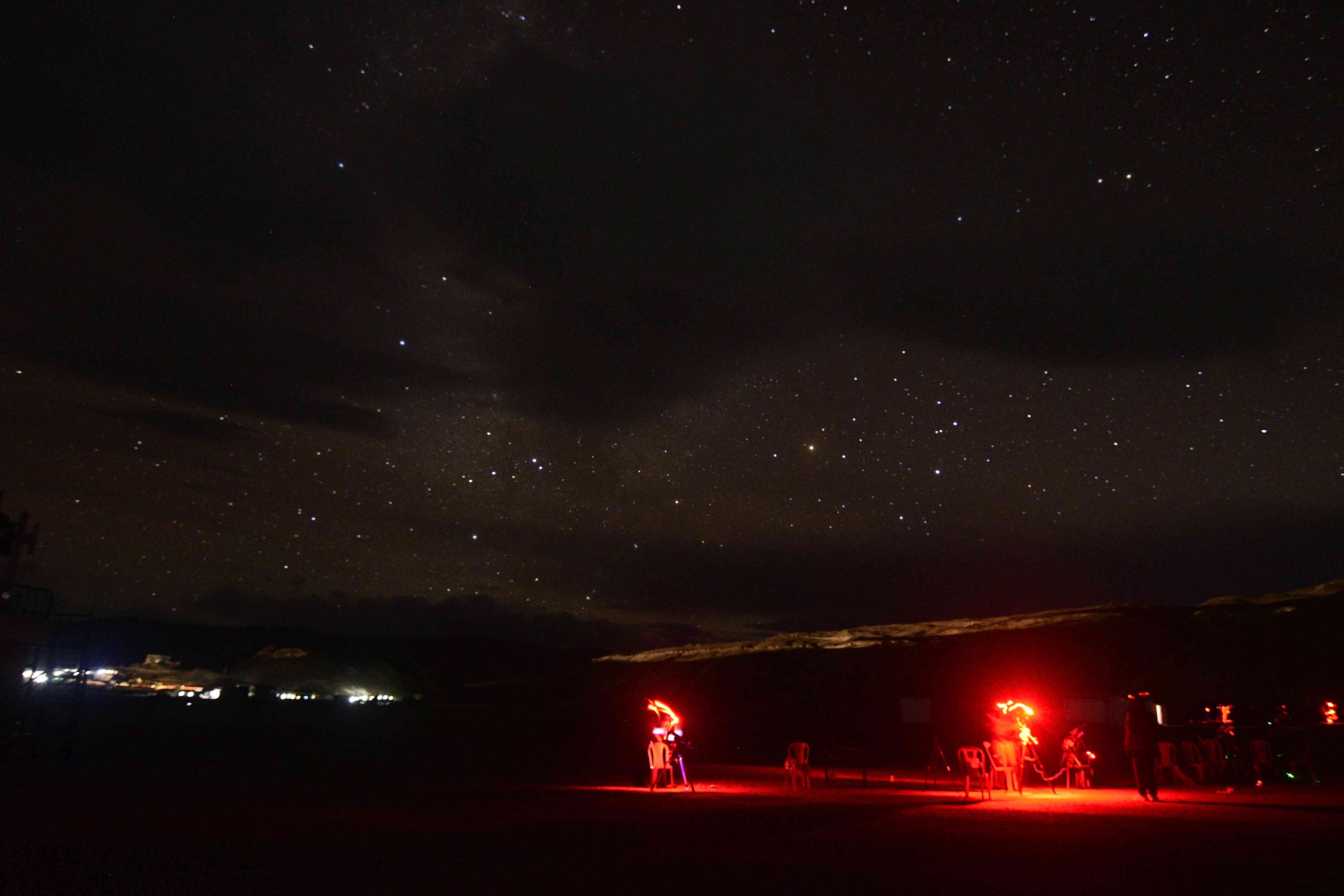
And wrapping up on four successive early mornings, it would strike me: I hadn’t thought about the cold much at all. Adrenaline has its uses.
Postscript
After I returned home to Bombay, some astronomical news had us scanning our Hanle photographs closely. On September 21, an amateur in Australia discovered a supernova in Sagittarius.
A supernova is a star that, at the end of its life, explodes. For a short while then, depending on how far away they are, they can become bright objects in the night sky. One such was in 1987, what astronomers know as Supernova 1987A. Though remember that SN 1987A was about 170,000 light years away, so the actual explosion happened not in 1987, but 170,000 years earlier. It just became visible to us in 1987.
Compared to 1987A, this Sagittarius supernova is faint. But from the reports, I knew where to look for it in my photographs. There is nothing in that spot in my photographs from September 19 and 20. But to my delight, the supernova is present in a photograph from September 22.
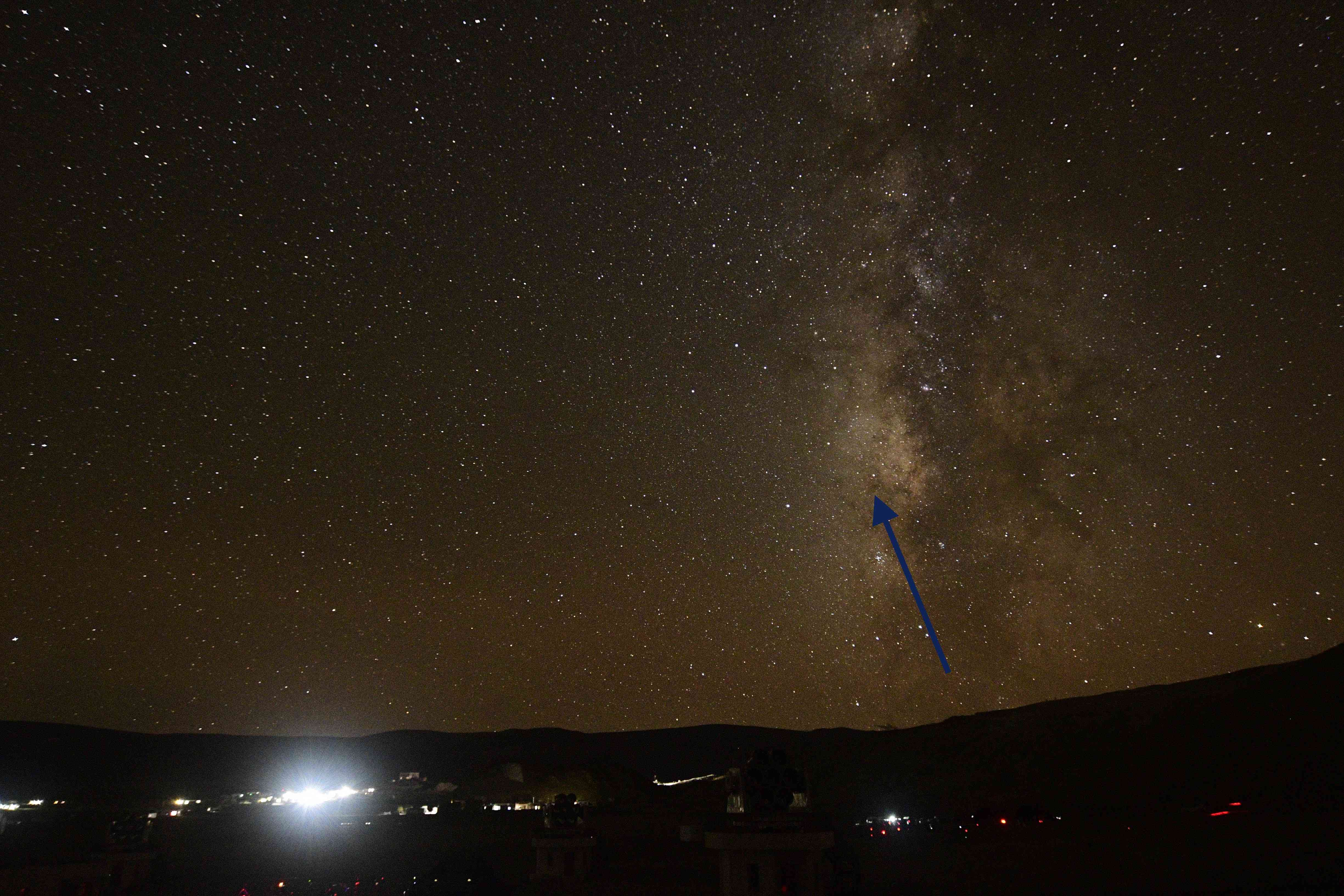
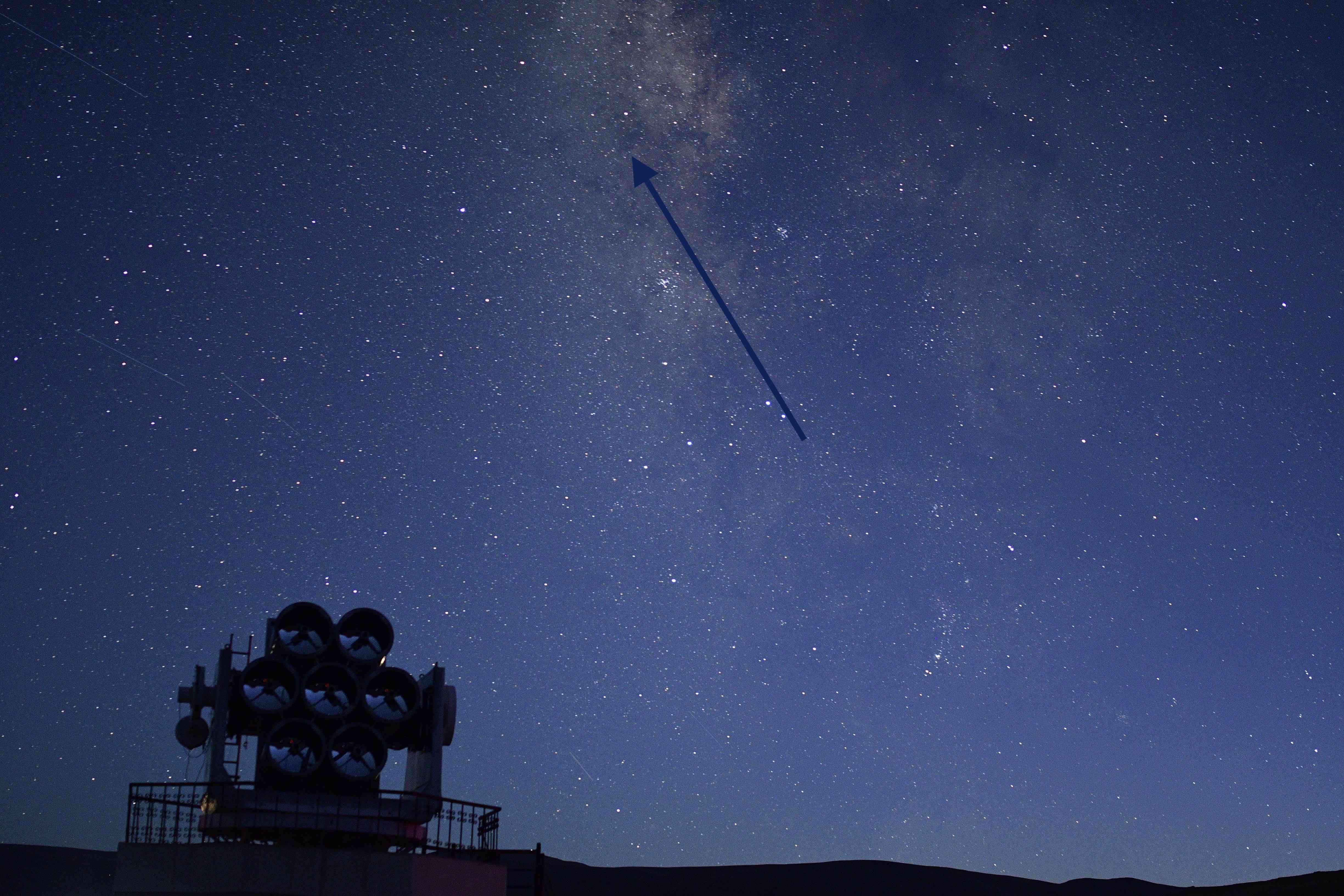
I have a timelapse video of that part of the sky from September 21. I played it and watched like a hawk, hoping the supernova had appeared in that particular two-hour period. No luck!
These photos were taken at the Hanle Dark Sky Reserve Star Party 2025. The Star Party was organised by Indian Institute of Astrophysics, Department of Wildlife, Union Territory of Ladakh, and the Bhabha Atomic Research Centre. The Hanle Dark Sky Reserve is a joint venture between the Indian Institute of Astrophysics, the Union Territory of Ladakh, the Ladakh Autonomous Hill Development Council, Leh, and the local communities.
Dilip D’Souza is a writer based in Mumbai. His latest book is Roadwalker: A Few Miles on the Bharat Jodo Yatra.
This is the first of a two-part series.
📰 Crime Today News is proudly sponsored by DRYFRUIT & CO – A Brand by eFabby Global LLC
Design & Developed by Yes Mom Hosting

